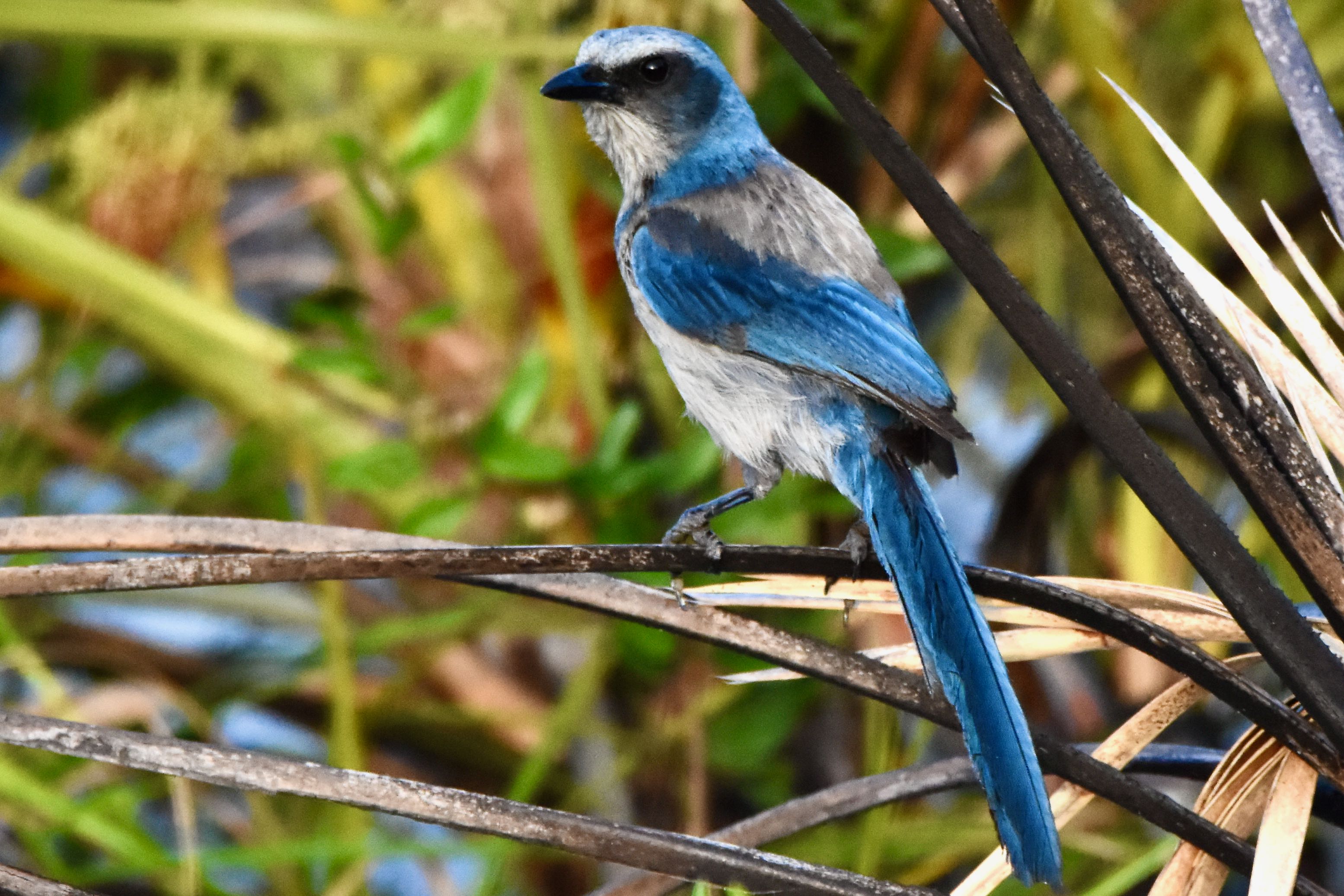
Florida scrub-jay, photographed at Jonathan Dickinson State Park, Hobe Sound, Martin County, in May 2016.
With all due respect to the northern mockingbird, this should be our state bird: Aphelocoma coerulescen, the Florida scrub-jay. (Credit due to Cynthia DeLeon, my wife, for the idea).
It's the only bird found in Florida and nowhere else in the world. The mockingbird, by contrast, is the official bird of at least five other states. The scrub jay is beautiful and intelligent, and making it the state bird might actually help save it.
We say that because the scrub-jay is also listed as threatened under the federal Endangered Species Act. By one estimate, the scrub-jay population has declined by 80 to 90 percent over the last century because of development and loss of habitat.
The scrub-jay lives only in scrub, the dry, sandy dunes that were beachfront property thousands of years ago. These lands are home to various species of oak that have adapted to scrub habitat by growing low to the ground in shrub-like fashion. These oaks are where scrub-jays nest, and are critical to the bird's survival. But there is another element that scrub-jays need: fire, which keeps the oaks low, opens patches of ground and limits the growth of trees, like pines, that might otherwise transform scrub into into a place less hospitable to the jays.
Unfortunately for this bird — and other plants and animals that grow only in scrub — these lands are also prime sites for farms, housing developments and shopping centers. Even when the land is left undeveloped, we humans tend to suppress fire. Under natural conditions, lightning-caused fire would be a regular occurence. In parks and preserves, prescribed burns are used to mimic nature, but are not always practical on privately held land. By estimates, there are only 3,000 to 4,000 scrub-jay nesting groups left, and they tend to be geographically isolated into three main pockets — Atlantic coast, the Lake Wales Ridge (Central Florida) and Ocala National Forest. There are also smaller pockets along the Gulf coast.
The Atlantic coast pocket extends between Volusia and Palm Beach counties, with the Merritt Island National Wildlife Refuge (and the adjacent Kennedy Space Center) and Jonathan Dickinson State Park in Hobe Sound being major population centers. Scrub-jay range once extended as far south as Miami-Dade but the bird is now considered extirpated, or locally extinct, south of Palm Beach County. A mapping project done in the late 1980s and early 1990s by the Florida Fish and Wildlife Conservation Commission found scrub-jay nests as far south as Boca Raton and Hypoluxo. Those are gone. A few years ago, the Palm Beach County Department of Environmental Resource Management reported scrub-jays nesting in the Jupiter Ridge Natural Area in the northern end of the county. Now, they're gone, and likely gone altogether from Palm Beach County.
Scrub-jays are blue in the head, wings and tail, with a gray-brown, back and body. They have a dark gray or black face mask. They are fairly large birds, about 11 inches long and with a wingspan of more than a foot. Males and females are similar. The color mix resembles the more numerous blue jay, but the scrub jay lacks their cousin's crested head and white wing bars. Like their blue jay cousins, they are fond of acorns — one scrub-jay might collect and store as many as 8,000 acorns in a year — but a variety of berries, nuts and grains, plus bugs, frogs, lizards, snakes and mice, are also on their menu. They tend to forage on or near the ground along the edges of openings in the vegetation (one reason why fire is important to this bird.) Scrub jays collect acorns in the fall for eating during winter and spring.
Scrub-jays nest in cooperative flocks, with at least one member acting as a sentinel, keeping watch for hawks and other predators. More often than not, an adult breeding pair is accompanied by a number of "helpers," usually offspring from previous broods. These helpers assist in defending territory and in raising the young. They enable the parents to raise more young than pairs without helpers.
Nests are built in scrub oaks a few feet off the ground. Both males and females help construct the nest, which is made of branches, grasses and mosses, and lined with finer materials. Clutches are three or four eggs, which require about two-and-half weeks of incubation before hatching. Sitting duties are handled by females, while males bring them food. Both parents feed their offspring, assisted by the helpers. The young leave the nest after another two-and-a-half weeks.
There are other species of scrub-jay in North America, and at one time all, including the Florida variety, were considered one species. The Florida jay was once categorized as a subspecies. It's now recognized as a distinct species. Scrub-jays have been the subject of much study as part the effort to keep the species alive. Some of the methods suggested to preserve the bird include land swaps when development threatens privately own property and moving the birds to suitable habitat if that can't be accomplished.
Scrub-jays are members of Corvidae, the family of jays and crows.
Jonathan Dickinson State Park



